All about pandas
Panda Facts | Pandas International
Scientific Name:
Ailuropoda melanoleuca
Adult Weight:
165 – 353 pounds
Weight at birth:
4-8 ounces
Adult Body Length:
4-5 feet
Diet:
25 to 40 pounds of bamboo per day
Life Span:
15-20 years in the wild
25-35 years in captivity
Habitat:
Southwestern China
Population
Although they once roamed over a large portion of Asia, scientists currently estimate the population of wild Giant Pandas at only 1,864, making Giant Pandas a seriously vulnerable species. They are found living in the wild in a small area in Southwestern China along the Tibetan Plateau.
There are approximately 600 in captivity in panda centers, zoos and wild life parks. Three zoos in the US currently have pandas; Memphis, Atlanta and Washington D.C. Giant Pandas are also found in zoos in Australia, Canada, Japan, Finland, Hong Kong, Malaysia, Thailand, Taiwan, Mexico, France, Singapore, Spain, Austria, Belgium, Russia and the United Kingdom.
Zoos outside of China must lease the animals from the Chinese government. This money is used for the preservation of the wild Giant Pandas.
History
In China’s Han dynasty (206 BC – 24 AD), the highly prized and gentle pandas graced the gardens of the emperors. Pandas were believed to have mystical powers.
In 1869, Pere Armand David, a French missionary and naturalist, was the first Westerner to describe a panda.
In 1972, when President Richard Nixon established relations with China, the panda gained attention in the United States. While visiting China, first lady Pat Nixon commented to her host that she loved the pandas. In response to this comment, the first panda was sent to the National Zoo in Washington, DC as a gift from China to Mrs. Nixon.
The panda is considered a “National Treasure” by the people of China.
Species
Referred to as a “living fossil,” the Giant Panda is believed to have existed since the Pleistocene age, approximately 3 million years ago.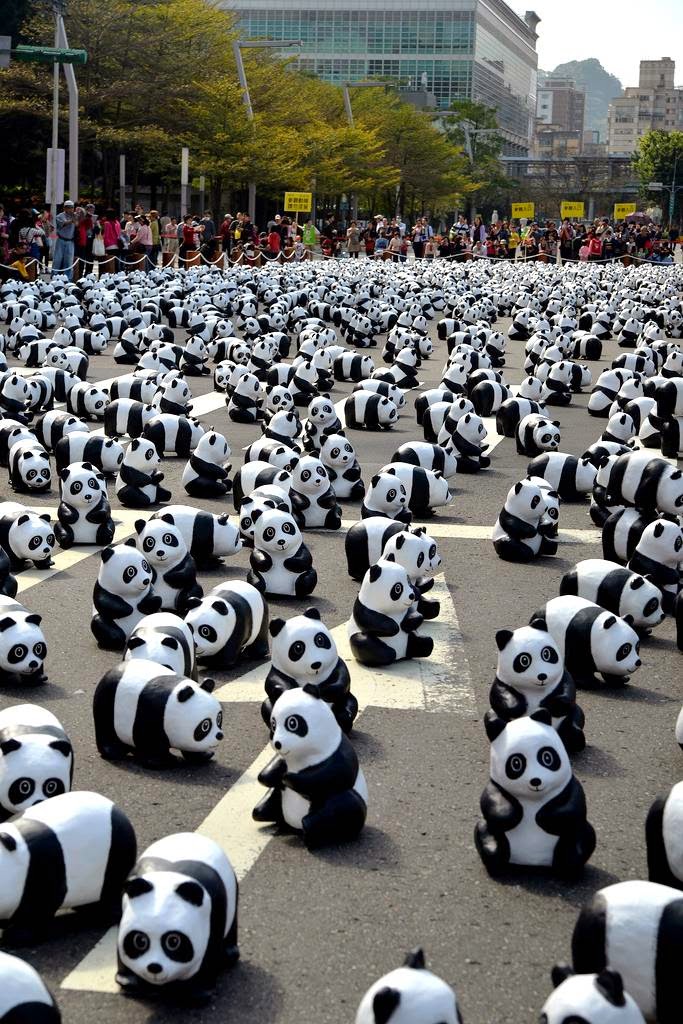 After years of debate, scientists have determined through DNA testing that the Giant Panda is actually a member of the bear family. It was once thought they might be of the raccoon family. The scientific name of the Giant Panda is Ailuropoda Melanoleuca.
After years of debate, scientists have determined through DNA testing that the Giant Panda is actually a member of the bear family. It was once thought they might be of the raccoon family. The scientific name of the Giant Panda is Ailuropoda Melanoleuca.
Food/Diet
Giant Pandas are classified as carnivores; however their diet is closer to that of herbivores. A Carnivore is an animal that eats mostly meat. An herbivore is an animal that eats mostly plants.
The Giant Pandas’ diet consists almost entirely of bamboo stalks, shoots and roots. They eat from 25 to 40 pounds per day. There are about 25 different types of bamboo.
When available, Giant Pandas will eat fish, flowers and small animals. In captivity they also receive milk, eggs, ground meat and specially formulated vitamin bread. Apples and carrots are a favorite treat.
Since the Giant Pandas’ digestive system is not very efficient, they must consume large quantities of bamboo every day in order to obtain the nutrition they need.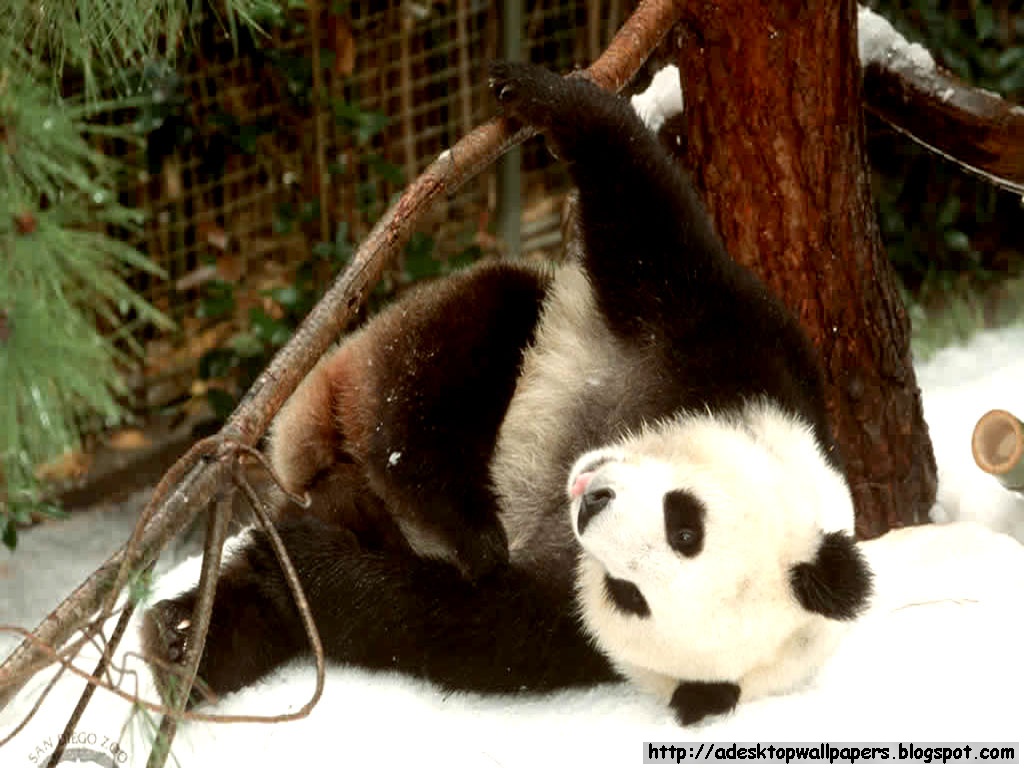 Cubs are especially prone to digestive problems.
Cubs are especially prone to digestive problems.
Pandas eat for up to 14 hours a day. Their unique paws make it possible for them to hold the bamboo and bite the stalks. They generally eat in a sitting position but also like to snack lying on their backs.
The puffy cheeks that make the Giant Pandas appear so adorable are actually powerful muscles that enable the Giant Pandas to chew through even the toughest bamboo stalks.
Unlike other bears, the Giant Pandas do not store fat and therefore do not hibernate. Consequently, they are constantly in search of food.
One problem for wild Giant Pandas is that the bamboo species flowers and dies. It then takes several years for the bamboo to recover. In the past, Giant Pandas would migrate to other areas in search for new plants. Now, with their range fragmented, this is often difficult.
Giant Pandas drink water from the rivers and streams in their mountain environment.
Appearance
Giant Pandas are known around the world for their unique black and white appearance. They resemble other bears in their shape, but have very distinctive markings. All Giant Pandas have black patches around their eyes and black ears on a white head. Their legs are black and there is a black band across their backs. Their mid sections are also white. It is very difficult to tell Giant Pandas apart since their markings are basically the same on all animals. Caretakers can identify individual Giant Pandas by small markings around their mouth or muzzle.
They resemble other bears in their shape, but have very distinctive markings. All Giant Pandas have black patches around their eyes and black ears on a white head. Their legs are black and there is a black band across their backs. Their mid sections are also white. It is very difficult to tell Giant Pandas apart since their markings are basically the same on all animals. Caretakers can identify individual Giant Pandas by small markings around their mouth or muzzle.
Giant Panda fur is coarse, dense and somewhat oily. Their thick fur acts as a coat to keep them warm in the cool moist climate of the mountain forests.
Unlike other bears, Giant Pandas are slow moving and seldom move faster than a walk. They appear clumsily in their movement.
Molting
The giant panda is perfectly engineered to live in the cold, damp climate that covers most of its home range. It is covered by a thick, dense pelt that insulates and shields it against the weather. Each season calls for a different amount of insulation, therefore, a different amount of fur. So how does the giant panda deal with this constant change? Molting. Many mammals around the world experience a “seasonal molt”. They grow extra fur in the late summer and fall to insulate against cold winter temperatures and then shed the excess fur in the spring and summer to cool down for the warmer summer weather. These seasonal molts require an abundance of energy.
So how does the giant panda deal with this constant change? Molting. Many mammals around the world experience a “seasonal molt”. They grow extra fur in the late summer and fall to insulate against cold winter temperatures and then shed the excess fur in the spring and summer to cool down for the warmer summer weather. These seasonal molts require an abundance of energy.
The giant panda’s diet is too rigid to risk the energy loss that accompanies a seasonal molt. Instead, the giant panda undergoes a continuous molt. This type of molting takes a much smaller and steadier toll on the pandas’ energy level. Molting gives the pandas a patchy appearance. People often associate the patchiness with poor health, when really, it is healthy and normal.
Paws
The front paws of a Giant Panda are very different from other bears due to a special bone found in their wrists. Their sixth toe, an opposable thumb, is used for grasping bamboo. They use this bone in the same way humans use their thumbs, mainly for grasping food.
Sense of Smell
Giant Pandas leave scent marks in their territories. The scent marks serve as a major form of communication. Giant Pandas can determine from the scent if another Giant Panda is in the area, if the other Giant Panda is male or female, how recently they left their mark, and, in the case of females, if they are in a reproductive period.
To mark their location, Giant Pandas will back up to a tree and rub their scent glands on the tree, then use their tail to spread the scent. Some Giant Pandas, particularly males, will back up on the tree until they are virtually doing a handstand in order to place their scent higher on the trunk.
Vocalizations
The China Conservation and Research Center for the Giant Panda has been working on a panda linguistics project since 2010. Scientists first made recordings of pandas at the center, vocalizations between cubs and adults in various situations, such as when they were eating, mating, nursing, fighting and so on.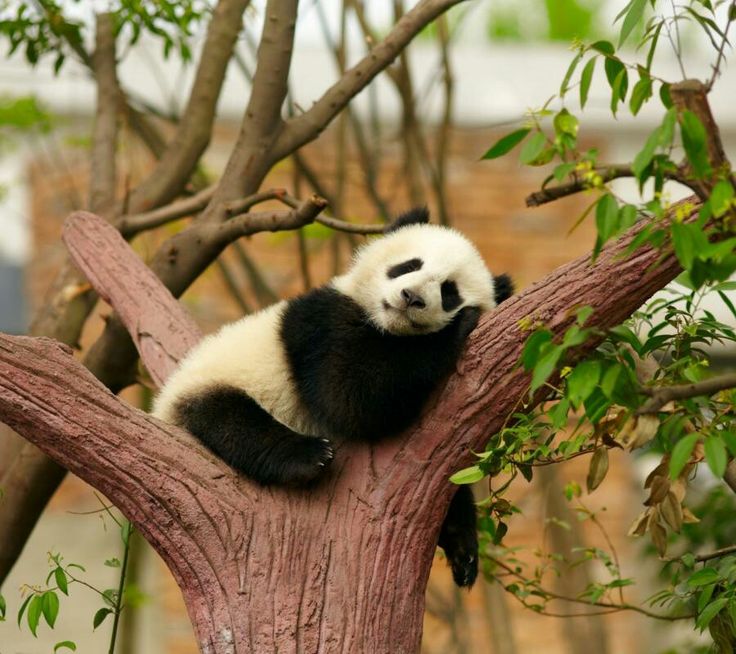
In new research published in the fall of 2015, Researchers decoded up to 13 different kinds of giant panda vocalizations in a surprising new insight into the private life of the reclusive creatures. They collected a large amount of data on pandas’ voices and activities, and analyzed the voiceprints.
Panda cubs can barely vocalize at all except to say things like “Gee-Gee” (I’m hungry), “Wow-Wow” (Not happy!) or “Coo-Coo” (Nice!).
When they grow a little, cubs learn how to express themselves by roaring, barking, shouting, squeaking, bleating and chirping. “If a panda mother keeps tweeting like a bird, she may be anxious about her babies. She barks loudly when a stranger comes near. The barking can be interpreted as “getting out of my place”, according to the researchers.
Pandas can be as gentle as a lamb when they are “in love”.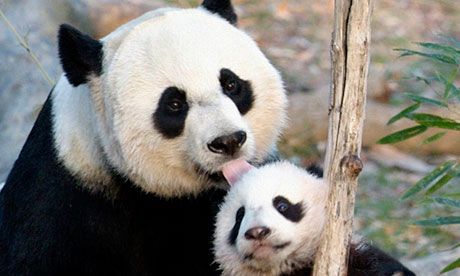 Male pandas baa all the time when they are wooing their lovers. The females respond with a constant warble if they feel the same.
Male pandas baa all the time when they are wooing their lovers. The females respond with a constant warble if they feel the same.
The researchers were so confused when they began the project that they wondered if they were studying a panda, a bird, a dog, or a sheep.
Reproduction
Breeding maturity in the Giant Pandas is generally between four and eight years. Females breed only once a year in the spring. Giant Pandas tend to have a low reproductive rate, partly because the females only ovulate two out of three days a year. In the wild, Giant Pandas use scent and calls to locate a mate during the reproduction period.
Fragmentation of the Giant Pandas’ habitat is a major impediment to breeding. When towns, roads, and power lines prevent the free movement from one area to another the male Giant Pandas cannot reach the females.
Giant Pandas nest on the ground or in hollow trees, giving birth approximately 100 to 150 days after they have mated. Hollow trees are becoming scarcer creating yet another problem for breeding.
Hollow trees are becoming scarcer creating yet another problem for breeding.
Females give birth to one or two cubs. Triplets are extremely rare. If twins are born, usually only one survives in the wild. The mother will select the stronger of the cubs and the weaker will die. It is thought that the mother cannot produce enough milk for two cubs since she does not store fat.
Cubs will stay with their mothers for about two years. Therefore females only reproduce every other year or less.
Many zoos have tried to breed Giant Pandas but with limited success. The breeding centers in China use both natural mating and artificial insemination and have become much more successful in the past few years.
Life Stages
neonates (0–365 days), juveniles (12- 18 months), sub-adults (19 months-4.5 years), and adults (over 4.5 years).
Cubs
Like all bears, Giant Panda babies are called cubs. Newborn cubs weigh 4 to 8 ounces and are about 6 to 8 inches long, about the size of a stick of butter.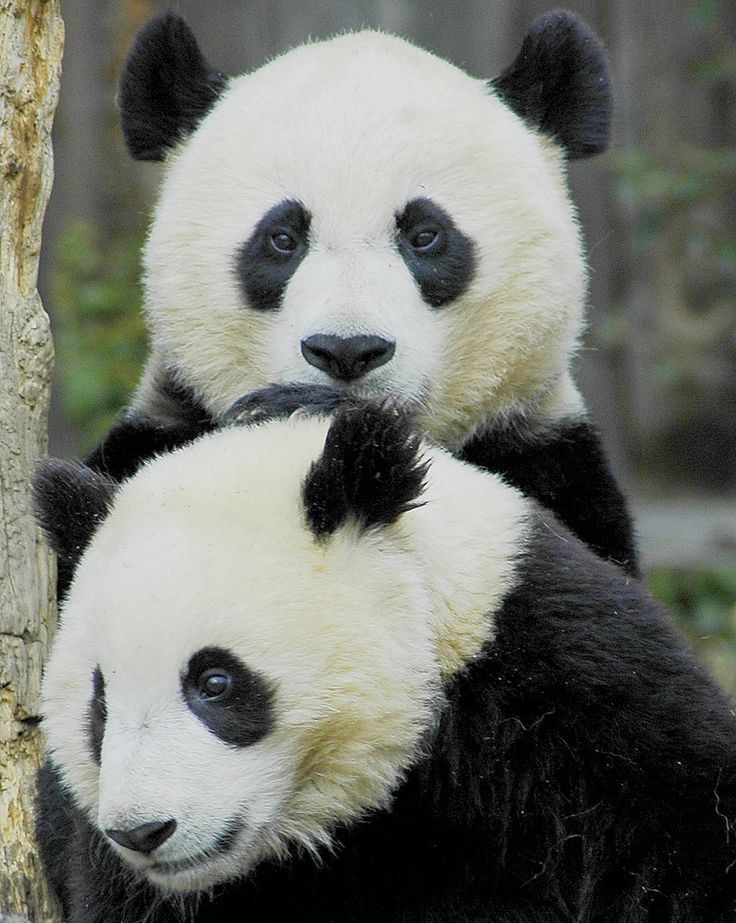 They are born pink, with almost no hair, and blind. At about 1 week they begin to develop their distinctive black and white markings and at about 5 to 7 weeks, they start to open their eyes.
They are born pink, with almost no hair, and blind. At about 1 week they begin to develop their distinctive black and white markings and at about 5 to 7 weeks, they start to open their eyes.
The mother holds the cub to her chest, much like a human mother. In size, compared to their mothers, panda cubs are some of the smallest newborns. Giant Panda cubs are especially vulnerable since the mothers don’t use a den and hibernate as other bears do. In the wild, Giant Pandas nest in hollow tree trunks or caves. The newborns won’t be able to even stand on their own for nearly 4 months. New mothers occasionally don’t seem to know how to take care of their cubs. In captivity, they are then raised by caretakers using incubators in the nurseries at the Giant Panda Reserves or Zoos. At the Giant Panda Reserves, the caretakers in the nursery leave one cub with the mother for her to care for and place one in the nursery in an incubator. In the nursery, the staff will hand feed the cub and stay with it 24 hours a day, every day. After about a week, the cubs are exchanged or “swapped” so both cubs will bond with their mother and receive her care. The mother accepts both babies, but only one at a time. This process of exchanging the cubs, which was developed at the Wolong Panda Center, allows both of the cubs to survive in captivity. The Wolong Panda Center now has a 90% survival rate with captive born cubs, due in large part to this method used to raise twins.
After about a week, the cubs are exchanged or “swapped” so both cubs will bond with their mother and receive her care. The mother accepts both babies, but only one at a time. This process of exchanging the cubs, which was developed at the Wolong Panda Center, allows both of the cubs to survive in captivity. The Wolong Panda Center now has a 90% survival rate with captive born cubs, due in large part to this method used to raise twins.
At one year cubs can weigh between 30-70 pounds
Activities
Older Giant pandas spend most of their time eating or sleeping. Younger ones like to play. They play with other Giant Pandas, running, chasing each other, climbing trees, and tumbling on the ground. Giant Pandas are truly “roly poly” creatures when they play.
In captivity they like “toys” which must be very sturdy and durable to stand up to their large teeth and powerful jaws.
They are well suited to their environment. They can swim in the mountain streams and enjoy the winter snow.
Pandas cannot store fat so they do not hibernate; therefore, they eat about 14 hours a day.
Habitat
The Giant Panda was once widespread in southern and eastern China, Vietnam and Myanmar (Burma). Today the Giant Panda is limited to the mountains in a few Chinese provinces in southwestern China. Most of the Giant Pandas are in China’s Sichuan Province, but they are also found in Shaanxi and Gansu provinces. Their range is along the eastern rim of the Tibetan Plateau.
Giant Pandas do not have a permanent den and do not hibernate. In the winter they will seek shelter in hollow trees. Giant Pandas typically have a range of 4-7 km but can travel up to 10 km a day looking for food, water, and shelter.
The Giant Panda has lived for centuries in coniferous forests with dense undergrowth of bamboo at elevations of 5,000 to 11,000 feet. Rain or dense mist throughout the year shrouds these remote forests in heavy clouds. In the winter snow is common.
Today, these forests are under attack by dramatic increases in human population.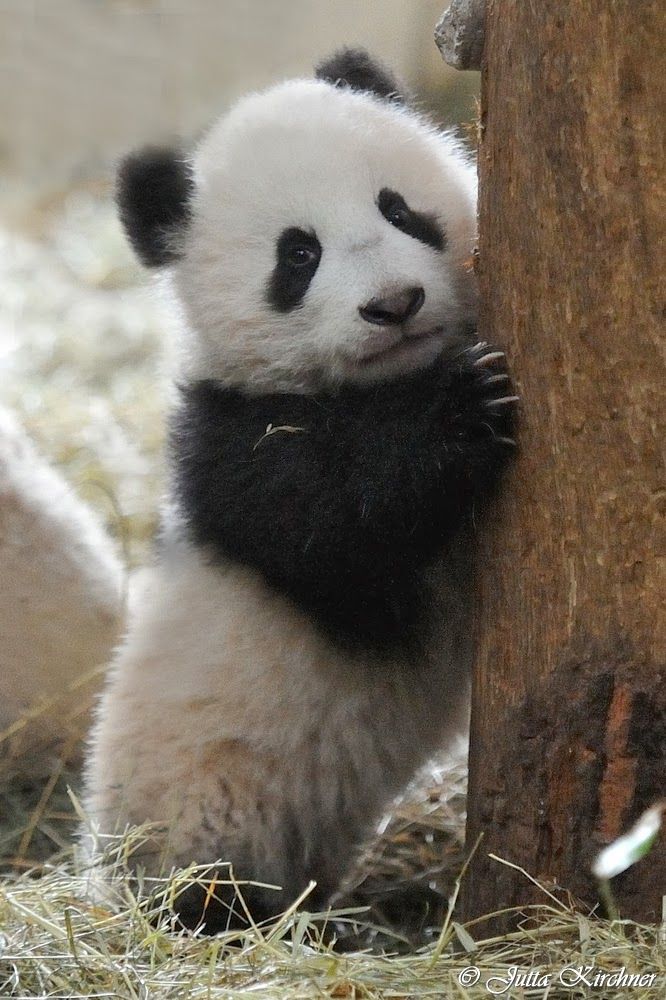 Agriculture, ranching, logging, trapping, and human settlement dramatically threaten their habitat. Previously, they lived at lower elevations but farming and clearing of the forest have pushed them higher into the mountains.
Agriculture, ranching, logging, trapping, and human settlement dramatically threaten their habitat. Previously, they lived at lower elevations but farming and clearing of the forest have pushed them higher into the mountains.
The Giant Panda’s primary food source, bamboo, is decreasing. Bamboo grows under the shade cover of the large fir trees. Logging and clearing the land for agricultural uses is a major factor in the reduction of bamboo.
The impact of rapid population growth has seen the destruction of significant Giant Panda habitat. In an effort to defend the Giant Panda, the Chinese government enforces a logging ban in the Giant Panda reserves.
The 8.0 earthquake of 2008 was in Sichuan Province, home to the Giant Pandas. The quake buried much of the Giant Pandas’ bamboo under tons and tons of rock and mud.
In the 1940s, the Chinese government began conservation efforts to protect pandas. In 1963 the first panda reserve was established in southern China. Pandas were classified as an endangered species in the 1980s.
Today there are 40 Giant Panda reserves in China. These reserves need to be connected via corridors in order to reduce isolation and fragmentation of the Giant Panda population. Villages and human activities now block open ranges for migration. The fragmentation of Giant Panda areas is a major problem affecting mating.
Another problem related to the fragmentation of the Giant Panda areas is that the bamboo will flower and then die off about every 20 years. When this occurs the Giant Pandas need to migrate to a new area. There have been reports of Giant Pandas starving when they are unable to find bamboo in new areas.
The destruction of the Giant Pandas’ natural habitat, the reduction in available bamboo forests and expanding human populations are the main threats to the Giant Panda.
2008 Earthquake
The May 12th 2008 earthquake epicenter was just a few miles from the Wolong Panda Center. Aftershocks continued for days. In one 24 hour period 178 aftershocks were monitored in the quake zone. There were approximately 70,000 deaths from the quake, 20,000 missing and 375,000 injured. 1.4 million quake survivors were evacuated.
There were approximately 70,000 deaths from the quake, 20,000 missing and 375,000 injured. 1.4 million quake survivors were evacuated.
Five staff members of the Wolong Nature Reserve were killed. One Giant Panda, Mao Mao was killed by the collapse of the exterior wall in her enclosure.
Xiao Xiao escaped from his enclosure and is still listed as “missing.” Another Giant Panda died following the earthquake when roads were blocked and he could not reach medical care.
Qing Qing was injured when her enclosure collapsed but was treated and is doing now doing well.
Wild Giant Pandas certainly died as a result of the earthquake but no estimates as to the number are available. Several Giant Pandas came down from the mountains in search of food. One wild Giant Panda has starved due to the destruction of the bamboo.
The consequences of the devastation to the bamboo as a result of the earthquake will continue for many years.
The earthquake dramatically increased the challenges for this already endangered species.
Status
A study in 2014 by the Chinese Department of Forestry estimated the current population of the wild Giant Pandas at approximately 1,864. As of 2020 there are approximately 600 giant pandas in captivity. Giant pandas are on the World Conservation Union’s Red List of Threatened Animals. The U.S. Endangered Species Act (ESA) protects giant pandas, as well as the Convention on International Trade in Endangered Species (CITES). While hunting and poaching have been reduced due to strict laws by the Chinese government, accidental capture of giant pandas in traps set for other animals still possess a serious problem.
The future of the giant panda is interwoven with the Chinese people. New advances in environmentally responsible farming, high yield crops to reduce logging, and population control efforts will all help the giant pandas. The Chinese Government also has several projects for reforesting hillsides, protecting grasslands and nature reserves for the giant pandas.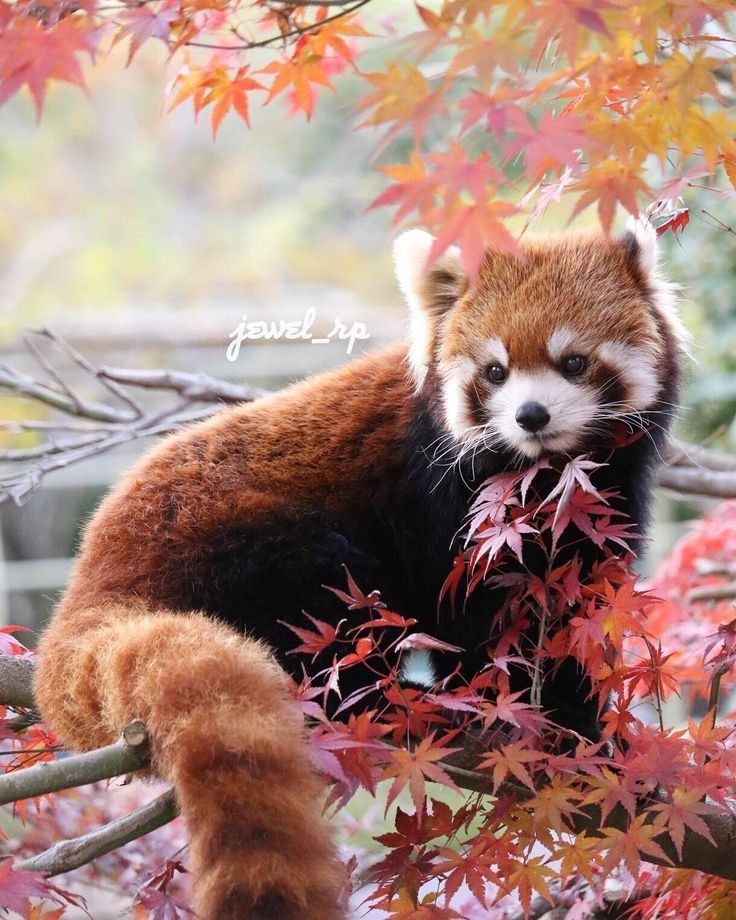 There are also plans to pay farmers to turn cropland back to forests and to establish commercial tree farms to replace logging. Bamboo planting, in Sichuan Province, for the captive and wild pandas is an ongoing project.
There are also plans to pay farmers to turn cropland back to forests and to establish commercial tree farms to replace logging. Bamboo planting, in Sichuan Province, for the captive and wild pandas is an ongoing project.
Status Change – Some people have questioned the change in status of the giant pandas, by the IUCN, from Endangered to Vulnerable. Let us take this opportunity to say, on one hand, this is cause for celebration. It shows that with your support, progress is being made in panda conservation. The Chinese have been working since the 1960’s to save their national treasure and this affirms the efforts are paying off. The captive population is currently stable, as the number in captivity well exceeds the number set forth in the Species Survival Plan.
That said…..there are still great concerns and we have definitely NOT reached even modest goals in panda conservation. The IUCN states that the vulnerable status is still at high risk of extinction in the wild.
What does it mean for Panda Conservation? Our greatest fear is the public and our supporters will think the pandas are safe at the present time and become complacent and that is not the case. If the government or the public gets lax in conservation efforts, the pandas could rapidly slide backwards. There may be many unintended consequences of this change including more human activity and trekking in their habitat. A recent International Conference on Panda Conservation published conclusions which state the giant panda is still endangered.
Premature – Professor Zhang Hemin, head of China Conservation and Research Center for the Giant Pandas, said he felt it was too early to down grade their status. He expressed concerns about the severely fragmented natural habitat which still threatens the lives of pandas. Concerns regarding the genetic status of the different populations that while improved, but is still not satisfactory. Climate change is widely expected to have an adverse effect on the bamboo forests which provide both their food and their home. Zhang feels there is still a lot to be done in both protection and management terms.
Climate change is widely expected to have an adverse effect on the bamboo forests which provide both their food and their home. Zhang feels there is still a lot to be done in both protection and management terms.
According to Zhang, “The wild giant panda population is broken up into 33 isolated groups, some with fewer than 10 individuals, severely limiting the gene pool. Of the 18 sub-populations consisting of fewer than 10 pandas, all face a high risk of collapse”. This is a major reason Pandas International supports the reintroduction programs.
“With the conservation status downgrade, protection work might slacken off and both the panda population and their habitat are more likely to suffer irreversible loss,” Zhang said. “Present protection achievements will be lost and some small sub-populations may die out” according to Zhang. So we must look at the big picture of the entire species, if one of these populations dies off it would be very harmful.
Fragmentation is one of the largest problems for the wild Giant Pandas, and although there has been talk of corridors for years, none have been constructed at this time.
Additionally, the reintroduction program is in its infancy and has a long way to go before it can be declared a success. Plus extensive research needs to be done on contagious diseases in order to protect both the captive and wild giant panda populations.
Conclusion
Increasing human population in the Giant Panda’s native region has resulted in a dramatic degradation of habitat and food supply. The biodiversity of the region is at significant risk.
This magnificent animal, a survivor of the ice age and centuries beyond, is now in grave danger of extinction. The survival of each living panda becomes crucial to the survival of the species; each animal, those in captivity and in the wild, must be attended to on a daily basis if they are sick or injured. Without proper medical equipment and medicine, Giant Pandas will die and each death brings us one step closer to a world without these unique creatures; one step closer to the destruction of yet another species and its ecosystem.
Sustaining the Giant Panda has reached a critical point. We must work to save the Giant Panda in order to allow the world the continuing benefit of one of its most extraordinary creatures.
50 Panda Facts to Celebrate 50 Years of Giant Pandas at the Smithsonian's National Zoo
Mar. 15, 2022
The Smithsonian's National Zoo has been home to giant pandas for 50 years! Enjoy these 50 fun facts in honor of the occasion.
- The Zoo’s first pandas, Ling-Ling and Hsing-Hsing, were a gift from Chinese Premier Zhou Enlai to the American people in 1972 after First Lady Patricia Nixon mentioned how much she loved them at a dinner in Beijing, China, earlier that year.
- Mei Xiang and Tian Tian, the Zoo’s adult panda pair, arrived in 2000.
 The pair and their cub will stay at the Zoo until 2023 through an agreement with China Wildlife Conservation Association.
The pair and their cub will stay at the Zoo until 2023 through an agreement with China Wildlife Conservation Association.
- As few as 1,864 giant pandas live in their native habitat, while another 600 pandas live in zoos and breeding centers around the world.
- Pandas are no longer an endangered species, thanks in part to Smithsonian research! Scientists and conservationists have worked to restore the giant panda’s habitat and increase breeding in human care. Giant pandas are still considered a “vulnerable” species.
- Though there are many theories, scientists are not certain why giant pandas have their distinctive black-and-white markings.
- Pandas are solitary animals but will vocalize during social interactions. They sometimes chirp, honk, bleat, chomp and bark.
- Pandas communicate through scent marking throughout their habitat and territory.
- Giant pandas have a "pseudo thumb," formed by an elongated and enlarged wrist bone covered with a fleshy pad of skin, which helps them grasp bamboo.
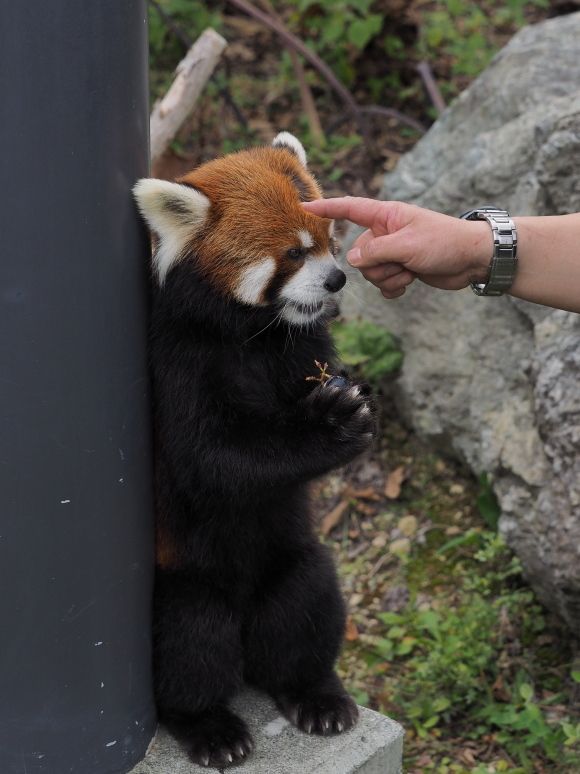
- A giant panda's digestive system is more similar to that of a carnivore than an herbivore, and much of what pandas eat is passed as waste.
- To make up for their inefficient digestion, pandas need to consume a comparatively large amount of food — from 70 to 100 pounds of bamboo each day — to get all their nutrients.
- The Zoo's Department of Nutrition grows bamboo at the Smithsonian Conservation Biology Institute. It also cuts bamboo from 20 stands located in the greater Washington, D.C., area.
- In the past, the Zoo accepted donations of bamboo from the public — but not anymore.
- A lot of science goes into feeding pandas and other animals! At the Zoo, giant pandas eat specially formulated nutritious biscuits, carrots, sweet potatoes and apples. Sweet potatoes are a favorite.
- Mei Xiang and Tian Tian’s favorite treat is an apple juice-flavored fruitsicle.
- Xiao Qi Ji’s favorite treat is a grape-flavored fruitsicle.
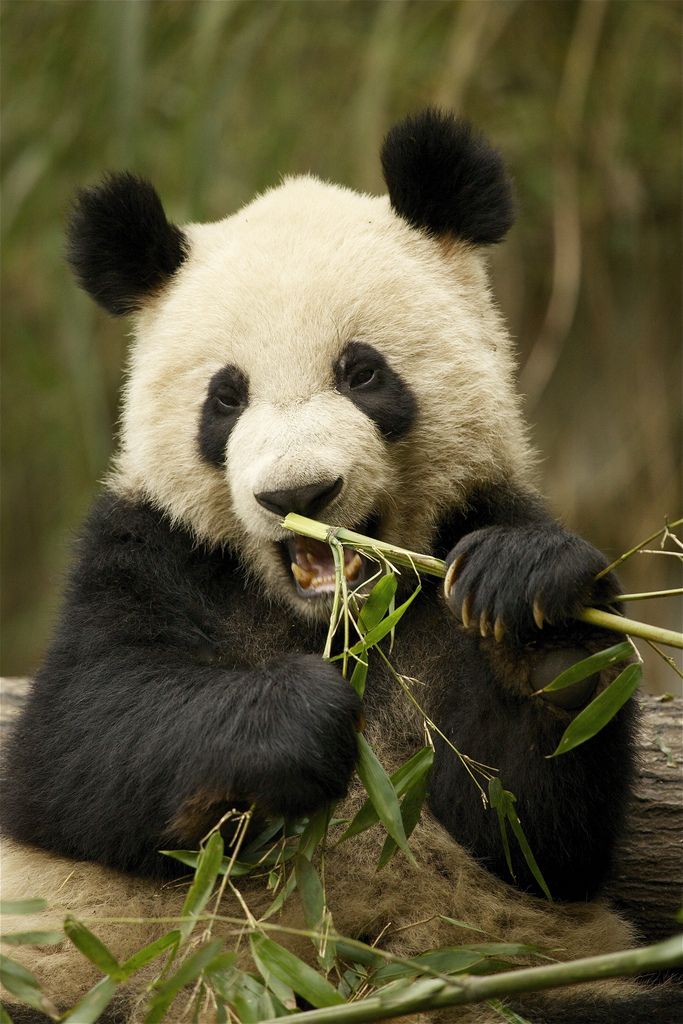
- On special occasions, such as birthdays, the pandas receive a huge frozen cake. Watch how one is made!
- Zoo staff never enter an enclosure with an adult giant panda. Like all bears, pandas are potentially dangerous.
- A panda’s jaws are so strong, they have a bite strength similar to that of a lion!
- Giant pandas reach breeding maturity between 4 and 8 years old. They can have offspring until their early 20s.
- Mei Xiang gave birth to Xiao Ji QI at age 22, making her the oldest panda to give birth in the United States — and probably the second oldest in the world (that we know of).
- Giant pandas are fertile for less than three days each year. Smithsonian scientists developed ways to predict that window of time to improve chances for pregnancy.
- Mei Xiang and Tian Tian have never successfully mated. All their cubs were born via artificial insemination.
- Giant pandas can experience pseudopregnancy.
 A pseudopregnancy mimics a real pregnancy, but instead of giving birth at the end of it, a giant panda's hormones and behaviors return to normal. Mei Xiang is believed to have had at least six pseudopregnancies.
A pseudopregnancy mimics a real pregnancy, but instead of giving birth at the end of it, a giant panda's hormones and behaviors return to normal. Mei Xiang is believed to have had at least six pseudopregnancies.
- Mei Xiang has given birth to four cubs that survived to adulthood: Tai Shan (male born in 2005), Bao Bao (female born in 2013), Bei Bei (male born in 2015), and Xiao Qi Ji (male born in 2020).
- Panda pregnancies last between 90 and 180 days, with an average pregnancy lasting 135 days. This wide variation in gestation occurs because the fertilized egg usually floats freely in the mother's uterus before it implants and begins developing.
- Bears in the wild, including giant pandas, give birth in dens on a bedding of twigs, often in hollows of large logs or trees, or in caves. At the Zoo, keepers provide a small enclosure for pandas to “nest” in.
- Although females may give birth to twins, usually only one cub survives.
- Newborn giant panda cubs are born pink, hairless and blind.
 They weigh 3-5 ounces and are about the size of a stick of butter.
They weigh 3-5 ounces and are about the size of a stick of butter.
- At 1/900th the size of its mother, a giant panda baby is the smallest mammal newborn relative to its mother's size, except for a marsupial, such as a kangaroo or opossum.
- Giant panda mothers lick their cubs to help them urinate and defecate in their first weeks of life.
- Giant panda mothers gently pick up cubs with their mouths to move them.
- Giant panda mothers will breathe heavily on their cubs to keep them warm and humid.
- After giving birth, giant panda mothers don’t eat for a very long time! Their focus during this time is nurturing and protecting their cubs, rather than eating. Scientists have observed giant panda mothers in the wild go as long as one month without eating or drinking.
- After Xiao Qi Ji was born, Mei Xiang didn’t eat for 12 days.
- External genitalia in bears doesn't develop until the bear is several months old.
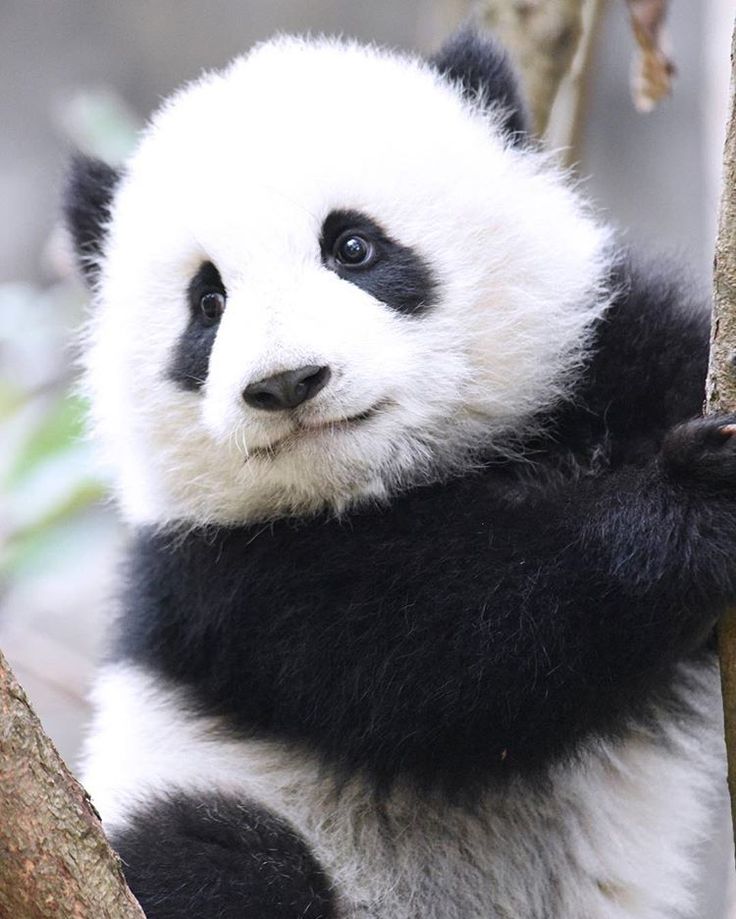 The best, and most reliable, way to determine a bear cub's sex is through DNA analysis. Scientists from the Smithsonian Conservation Biology Institute's Center for Conservation Genomics obtain the DNA from a gentle cheek swab during a cub’s veterinary exam.
The best, and most reliable, way to determine a bear cub's sex is through DNA analysis. Scientists from the Smithsonian Conservation Biology Institute's Center for Conservation Genomics obtain the DNA from a gentle cheek swab during a cub’s veterinary exam.
- Giant panda cubs may stay with their mothers for up to three years before striking out on their own. This means that a wild female, at best, can produce young only every other year.
- All giant panda cubs born at the Smithsonian’s National Zoo depart at around 4 years old to join breeding programs in China.
- Male pandas are not involved in the care of their cubs. Fathers and their cubs may never encounter each other in the wild.
- Scientists are not sure how long giant pandas live in the wild, but it is shorter than panda lifespan in zoos. They estimate that lifespan is about 15-20 years for wild pandas and about 30 years for those in human care. Chinese scientists have reported zoo pandas as old as 38.
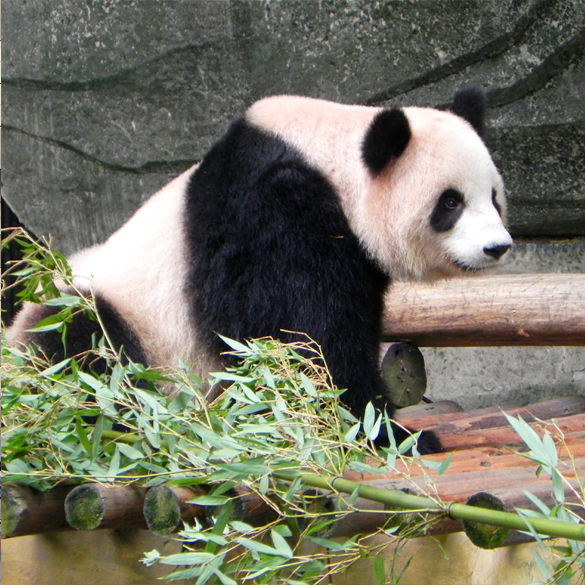
- The Smithsonian’s National Zoo's giant panda Hsing-Hsing died at age 28 in 1999.
- The giant pandas at the Zoo have air-conditioned grottos and misting sprays in their outdoor enclosure so the pandas can stay outside all summer long, if they choose to.
- Giant pandas and red pandas are not as closely related as their names suggest. Red pandas are actually more closely related to raccoons than to giant pandas!
- The Smithsonian National Zoo's Giant Panda Cams have been viewed more than 100 million times.
- The Zoo’s Giant Panda Cam program launched in 1999 and continues to this day, with about 40 cameras operating at any given time.
- Volunteers operate these cameras and choose the two best views to share with the public via the Giant Panda Cam.
- Smithsonian scientists have trained more than 1,500 students and professionals in China on techniques for studying and conserving giant pandas and their habitat.
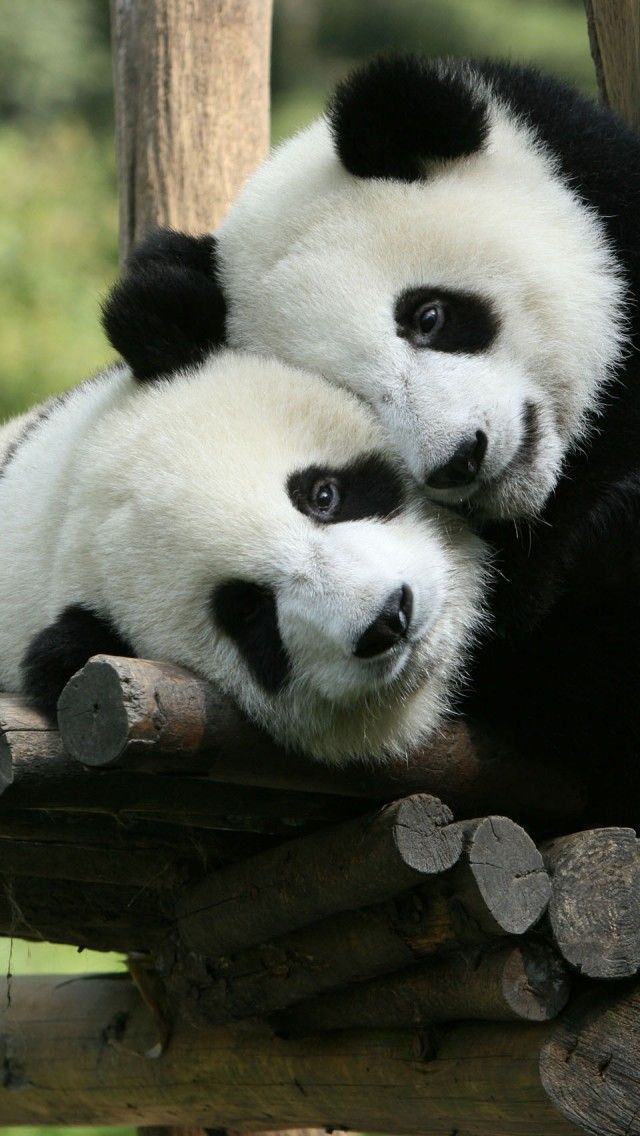
- Smithsonian scientists have produced more than 150 papers on groundbreaking biological and ecological discoveries related to giant pandas.
- Smithsonian scientists created the framework for how pandas are bred to improve breeding success and genetic diversity. Zoos across the globe now use this same tool for other animals!
- The greatest threat to wild giant pandas is habitat loss. Smithsonian scientists and colleagues are working to restore bamboo forests in the Qinling mountains of China.
- Climate change threatens the giant panda’s habitat. Everyone can help make a difference by using water and energy more efficiently.
Giant panda(bamboo bear) of China – All information and panda pictures
Giant panda (bamboo bear) is a national treasure of China, in addition, it can be seen on the logo of the World Wildlife Fund (WWF). Below you will find out where you can see a panda in China , how long pandas live and much more, panda pictures.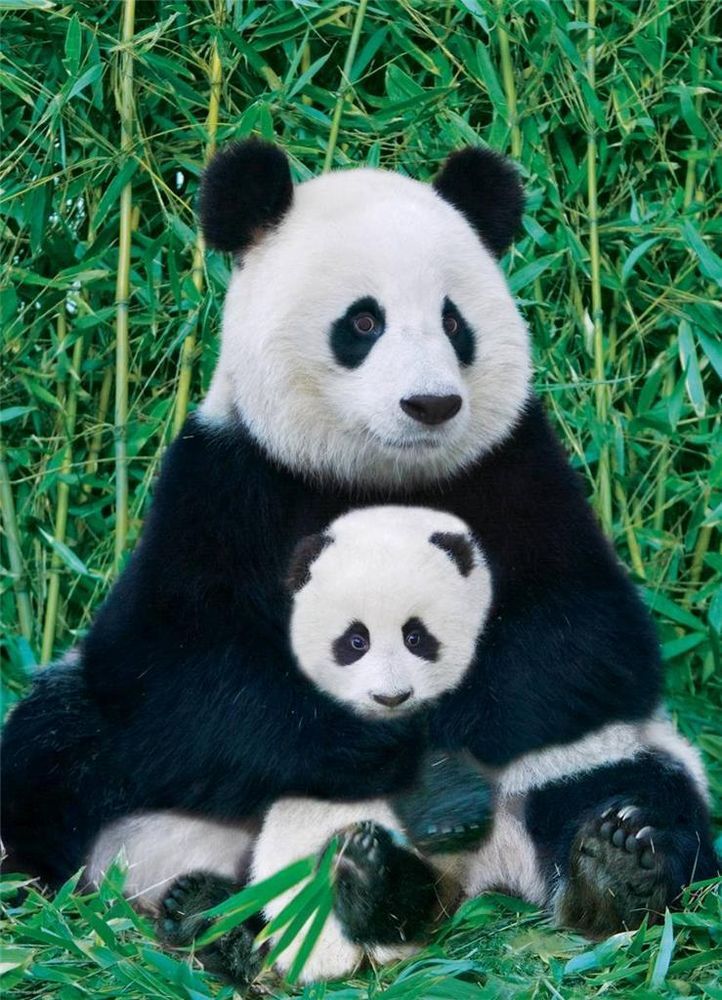 ..
..
A brief description of the Giant panda - how long do pandas live?
- Chinese name: 大熊猫, dàxióngmāo (Big Cat Bear)
- View: Mammals
- Family: Bear
- Permote: Melanoleuca, has a black and white color
- Size: Average length-1.5 meters
- Weight: can reach 150 kg
- Lifespan: 15 to 20 years in the wild (up to 30 years in captivity)
- Reproduction: One cub at 2 years; mating season is spring, panda cub is born in late summer
Find out more Interesting Facts about adorable pandas.
Appearance of the Giant Panda
The Giant Panda is easily recognizable by its distinctive black and white coloration. Panda's paws, eyes and ears are covered with black fur; a black strip also runs around the shoulders of the animal.
Have you noticed what color the panda's tail is? The tail of the giant panda is white! Learn about what pandas look like: description, characteristics, appearance of a giant panda.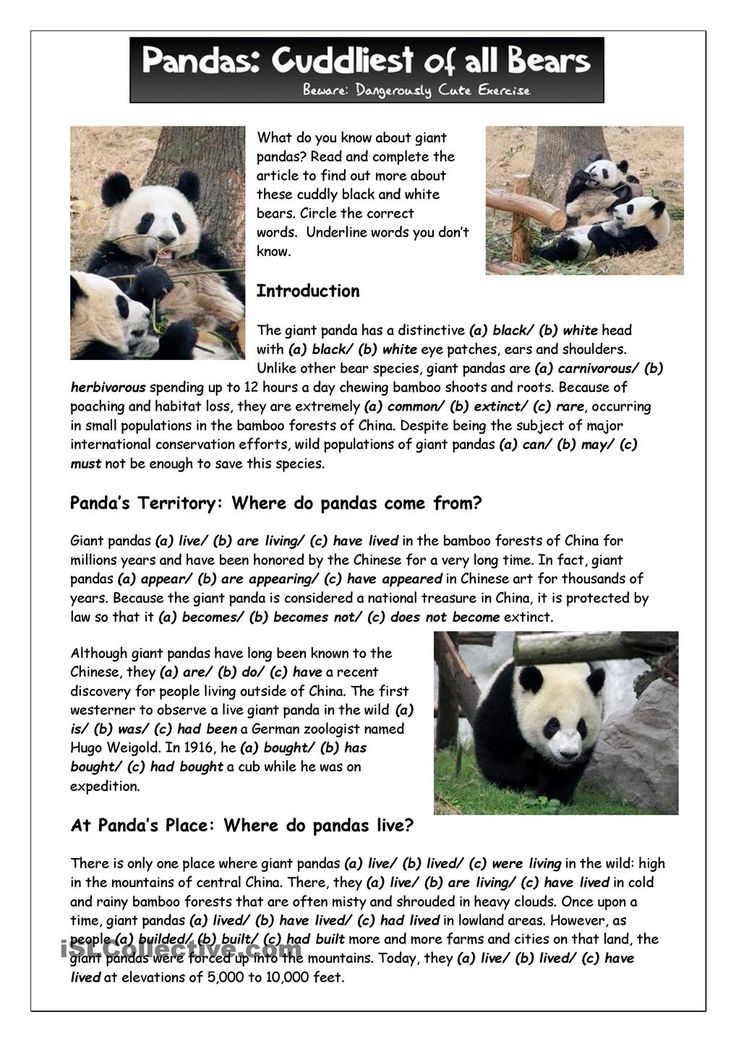
And another question: do you know what color newborn pandas are? They are pink! Read more about how pandas are born.
Giant panda habits
Giant pandas spend up to 14 hours a day eating. The fact is that the calorie content in bamboo is small, and the panda quickly begins to feel hungry again.
After eating, pandas go to bed for 2 to 4 hours. When they wake up, they again go in search of food.
In addition to feeding and sleeping, giant pandas also climb trees. Yes, these huge clumsy bears can climb trees! Usually, pandas climb a tree to get away from danger, during the courtship period, and also to avoid stronger competitors.
Learn more about Giant Panda Habits.
Giant Panda Diet - What Pandas Eat
99% of Giant Panda's daily diet is bamboo
Pandas eat bamboo roots, shoots and leaves. Bamboo makes up 99% of their daily diet. In addition to bamboo, they feed on some types of fruits.
Giant pandas in captivity are fed special bread made from rice and corn flour, soy powder and eggs.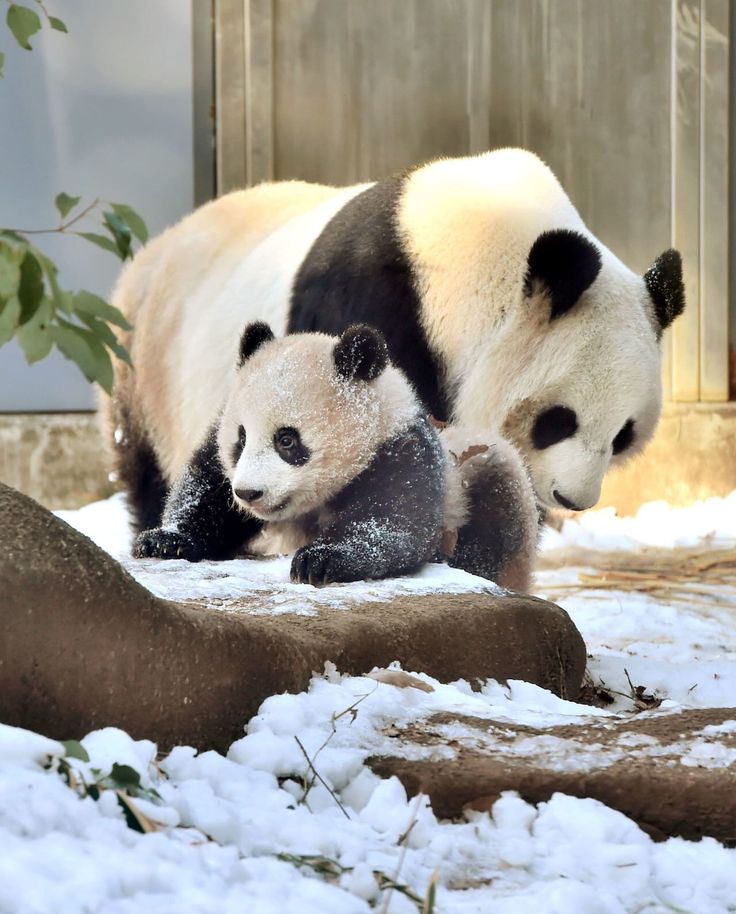 Wild pandas also eat grasses, insects, mice and even lambs found in the surrounding villages.
Wild pandas also eat grasses, insects, mice and even lambs found in the surrounding villages.
Read more about what a panda eats.
View pandas in China
Chengdu is the best place in China to watch giant pandas
Giant pandas in China live in the west and southwest of the country. The city of Chengdu is, without exaggeration, the best place to get acquainted with these cute animals. Here you can visit the big panda and get acquainted with the habits of the animal, which has become one of the symbols of the Celestial Empire.
Giant pandas are dearly loved not only by the people of China, but also by many foreigners - children and adults. The best places in China to see the panda are located in the Chengdu area, it is called "home of the giant panda" . In addition, the panda can be seen in zoos in cities such as Beijing, Shanghai, Chongqing, Guilin and Hong Kong.
If you are curious to watch the panda in its natural habitat - come to Sichuan! More information on how to visit a giant panda is available on the China Panda Tours page.
Get even closer to see the panda by participating in a volunteer program at the China Center for the Conservation and Study of the Dujiangyan Giant Panda (CCRCGP) near Chengdu. Here you can take care and even feed the giant panda .
In addition to the giant panda, Chengdu is a place where you can observe and learn a lot about red pandas.
Pandas in nature - Where pandas live
Pandas can only live in vast bamboo forests in a remote mountainous region
As of 2014, there are only 1864 giant pandas left in the wild . It is considered one of the rarest endangered species in the world, which is why the giant panda has adorned the logo of the World Wildlife Fund (WWF) since the foundation of the organization in 1961 years old.
Nowadays, the only place suitable for the giant panda to live in its natural environment is in a remote mountainous region at an altitude of 1200 to 3100 meters above sea level. These are the foothills of Tibet in the provinces of Sichuan, Gansu and Shaanxi.
These are the foothills of Tibet in the provinces of Sichuan, Gansu and Shaanxi.
Pandas can only live in vast bamboo forests because bamboo is their main food .
There are large panda bases in Chengdu City, Sichuan Province (eg Bifengxia Giant Panda Nursery), where both wild and captive pandas are cared for. The most famous of them is the Giant Panda Research Center, located 10 km from the center of Chengdu.
Learn more about the Giant Panda's habitat on the Pandas in Nature page.
Why pandas are on the verge of extinction and what measures are being taken
The giant panda has recently been listed as "vulnerable"
Giant panda habitats are gradually disappearing due to deforestation and the development of agricultural production. There have also been cases of poaching in history. The disappearance of the natural environment for the panda has led to the fact that the animals are under the threat of extinction.
On September 5, 2016, the giant panda was moved from the endangered species list to the Vulnerable category.
The giant panda's natural habitat is protected by the Chinese government. Agricultural land is moving back into forest areas. In the event of an earthquake, rescued pandas are nurtured in a nature reserve and then released back into the wild.
China Giant Panda - Private Tour with China Highlights
Come to Chengdu to visit Giant Pandas!
If you are interested in seeing panda cubs or watching wild pandas, come to Chengdu! For your inspiration, we have prepared the following individual tours with a visit to the Giant Panda Sanctuary:
- Tours to China to visit the pandas
- Tours to Chengdu
- Yangtze River Cruise Tour and Giant Pandas 2 You can choose a ready-made tour or take it as a basis to create your own. To do this, just write to China Highlights consultants, and we will help turn your ideas into unique logical routes.

Panda cub - How pandas are born
What does a panda cub look like? Watching the growth and development of a giant panda cub is a very exciting process. But caring for panda cubs is very difficult: these cute little creatures are unusually fragile, they can easily get sick and die. In the 60s of the last century, only about 30% of panda cubs survived. Today, in panda breeding centers, this figure has already increased to 90 percent!
Newborn panda cub
A panda cub is born at the end of summer, between July and September. The female giant panda bears offspring from 3 to 5 months. Giant panda cubs are usually born very small.
When Giant Pandas are first born, they look completely different from adults. The panda cub is very tiny, blind, pink, and has practically no hair. The average panda cub weight at birth is only 100 g - one nine hundredth of the mother's weight! The lightest panda cub at birth weighed only 36 g, and the heaviest - 210 g.
The paws of a newborn panda cub are so weak that he cannot hold on to them at all. Within 2 months of birth, panda cubs only feed on milk and sleep .
How pandas are born
1 week
Dark fur begins to appear on the ears, around the eyes and around the shoulders of the panda cub.
After 25 days
Black hair appears on the neck and chest. Dark circles around the eyes get bigger. At the same time, white wool begins to grow, and at this time the baby giant panda begins to gradually acquire its the familiar black and white look of . A month after birth, a panda's weight is about 2 kg.
After 3 months
The paws of the panda cub are getting stronger. They can already walk a little. Quite a bit - at a distance of no more than a meter, while staggering and sometimes falling. The weight of a panda cub at this time is about 5-6 kg.
4 months
Giant panda cubs can already run a few steps. During this period, they are very fond of playing and rolling on the ground.
During this period, they are very fond of playing and rolling on the ground.
6 months
At this time, giant panda cubs start eating bamboo. Usually, spring just comes, and after six months, panda cubs begin to grow much faster. Usually male pandas develop faster than females.
1 y.
If she does not become pregnant, she lives with the cub until it is 2 years old, and then leaves it to live on its own. The weight of a one-year-old panda is up to 40 kg.
Giant panda - growing up
Giant panda cubs begin to leave their mother at about 2 years of age. In the wild, giant pandas reach sexual maturity at about 7 years of age. In artificially created conditions, this happens 2 or even 3 years earlier. The weight of an adult giant panda is from 80 to 150 kg.
A giant panda in China gave birth to triplets!
The world's first giant panda triplets were born in a Chinese zoo.
Come to China to see the giant panda!
Arriving in China, you can visit the big panda and learn everything about the life and habits of this cute animal, which has become one of the symbols of China.











